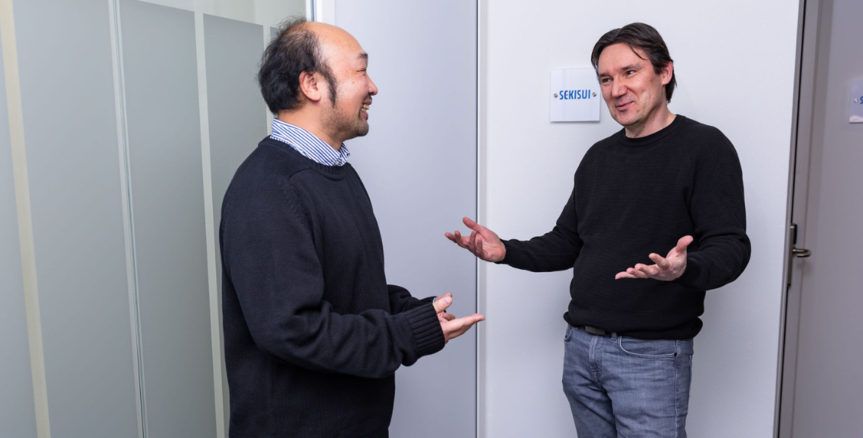Embracing cultural diversity at SEKISUI:
understanding high-context and low-context communication
At SEKISUI, we are dedicated creating a diverse and inclusive workplace where employees from around the world collaborate seamlessly. Our recent Cultural Workshop highlighted this commitment, aiming to bridge the gap between Japanese and Western business cultures. This enriching experience emphasised the importance of understanding and respecting each other’s cultural nuances and communication styles.

Training: continuous learning for mutual respect
Continuous learning about cultural nuances is essential for fostering mutual respect and smoother collaboration. Every year, SEKISUI is providing to all European colleagues the possibility to participate in cultural workshops. During the workshop, participants gain valuable insights into Japanese and Western business etiquettes. This training is crucial for creating an environment where every team member feels understood and valued.
Communication: high-context vs. low-context styles
One of the key highlights of the recent workshop which took place in October, was understanding the difference between high-context and low-context communication styles.
- High-context communication: predominantly found in Japanese culture, this style relies heavily on implicit messages and non-verbal cues. Context, relationships, and shared understanding play a significant role in conveying meaning. This can sometimes lead to misunderstandings with those who are not familiar with these subtleties.
- Low-context communication: common in many European cultures, this style is more explicit and direct. Information is conveyed primarily through words, and there is less reliance on context and non-verbal cues. This straightforward approach can sometimes be perceived as blunt or overly simplistic by those accustomed to high-context communication.

Examples in the Workplace
During a feedback session at the end of a meeting, a Japanese manager might give feedback in a very high-context style by saying, “I noticed some areas where we can improve.” The employee is expected to understand the specific areas needing improvement through context and previous interactions.
A European manager might say, in a low-context style, “Your report needs more detailed analysis in the financial section.” This direct feedback clearly outlines what needs to be improved.
Understanding these differences is fundamental for teamwork for Japanese companies operating in Europe, like SEKISUI. By appreciating and adapting to these communication styles, our employees can reduce misunderstandings and enhance overall collaboration.
Building an Inclusive and Harmonious Workplace
Our goal at SEKISUI is to build a more inclusive and harmonious workplace where every voice is heard and valued. The Cultural Workshop is just one of the many initiatives we undertake to achieve this. We will continue to learn and grow from each other, leveraging our diverse backgrounds to drive innovation and success.